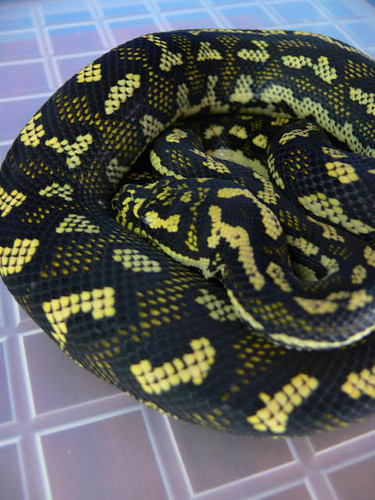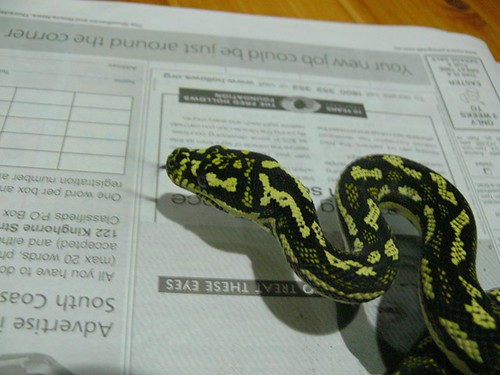Ok firstly I really like your hybrids, I have nothing against hybrids, in the future I will hybridize my own.
However.
Hey all, I was taking a few pictures of our mixed species morelia and thought I'd share.
No you were taking pictures of a few mixed subspecies of Morelia. All of these are the same species. In one of your earlier posts you did say
Morelia spilota spilota X Morelia bredli This is wrong. They are both species
Morelia spilota. The difference is in the subspecies name for both which is extremely different to a difference in the species.
This is very important to me as it is where I define the line of an acceptable hybrid. Those at a level higher than intra-specific hybrid I do not agree with the breeding of.
At least your trying to be ethical about it, but get the terminology right they aren't hybrids as such.
They are hybrids. Realistically every animal bred in captivity that is not a clone bred back with the original animal is a hybrid. This is because hybridism truly should be defined as two animals of different genetic identity (to any level) that are not breeding in a natural setting (i.e. the wild).
What they are is intra-specific hybrids.
Integrades which have been mentioned (even if not by you) are not hybrids they are naturally occurring snakes which genetic identity contains characteristics commonly associated with two distinct subspecies (Or in rare cases species which would be a hybrid intergrade) especially if these characteristics are phenotypically displayed. I can also accept that what would 'technically' be a hybrid between two integrades of the same relative geographic area bred in captivity can acceptably be called an intergrade.
Heres some definitions to mull over .
Intergrade = In Australia this usually refers to the Carpet pythons from localities or intergrade zones that are found between known
Diamond python and Carpet python populations. IE Port macs etc .
Intra Specific Intergrades = are usually the result of a breeding between different sub species either by captive breeding "
Jungle x
Diamond" or in nature where there is sub species overlap in their natural enviroment . .
OR when the same species from different localities are bred together .
IE NT
Water python bred to a QLD Water python .
Technically all the above are Hybrids.
But in laymans definitions ?
Intergrades are port macs and Hybrids are
Woma x Diamond type cross breeding .
Carpet python to Carpet python is still a Carpet python.
My 2 cents worth.
I respectfully have to disagree with these definitions.
Your first definition for integrade does not define what an intergrade is but gives an example of what one is, an example that I agree is correct.
Your second definition should be intra-specific hybrids not intra-specific integrades. Also this should not say animals where the 'borders of animals overlap'. Integrades in nature are not on a line where one side is one subspecies is on and the other side is the other. They are a broad nearly undefinable band in which many levels of variation occur.
Also a water python (Qld) to a water python (NT) would not be an integrade it would be an intra-subspecific hybrid of intergeographical area.
This is how I define things and I agree there is reasonable area for variation within definition but it should still be relatively similar to this.
All that said and done those are some lovely
Morelia hybrids I can only hope they keep getting better and that as they do those concerns already raised are addressed properly.
Edit: Just one thing I forgot to mention is that if you were X breeding withwhat is currently recognized as
Morelia spilota imbricata I would have a problem with it as I recognize these should be a species of their own.












